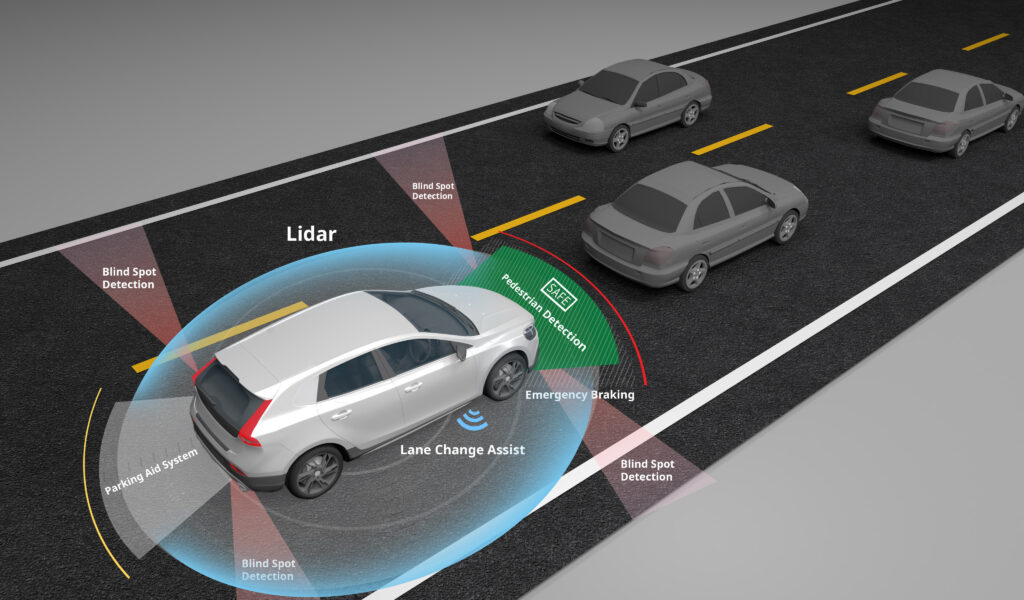 By Joseph Notaro, Vice President of WW Automotive Strategy and Business Development, ON Semiconductor
By Joseph Notaro, Vice President of WW Automotive Strategy and Business Development, ON Semiconductor
Like all verticals, the automotive market has suffered from the impact of COVID-19. However, unlike some, it has shown remarkable resilience, with a recovery that has been both rapid and strong.
There are also signs of the positive impact enforced lock-down can have on the environment. Air is measurably cleaner in many industrialized areasfollowingthe lockdown periods. This is accredited to the reduced emissions that come as a result of less commercial and transportationactivity.
Conventional internal combustion engines are still responsible for a large part of the noxious fumes emitted into the atmosphere, so when vehicles stopped rolling the reduction in greenhouse gasses was noticeable. Our earth was given a chance to breathe again.
This has generated momentum behind a wider and faster adoption of the electric drivetrain, which is also being supported by governments’ clean energy incentives. We can expect to see this continue throughout the rest of 2020 and into 2021, putting greater demand on the semiconductor industry to develop, manufacture and supply the enabling technologies.
Early adoption of Level 5 autonomy
There is a lot of talk about autonomy, and the current period of optimistic growth in the market will inevitably draw even more attention to this. ADAS is definitely a growth area, as more OEMs implement optional safety features today that will become the standard features of tomorrow.
However, we should not expect a rapid acceleration to Level 5 autonomy for ownership vehicles. Technical issues aside, there is no compelling business case for full autonomy in a time when the desire to self-drive is still strong amongst consumers. The cost of Level 5 still outweighs the convenience.
What is apparent, particularly in a world where social distancing is becoming the “newnorm”, is a need for last-mile autonomy. We can expect to see Level 5 capability to appear here, first, in the form of autonomous delivery vehicles. The reach of this autonomy will increase, as the lastmile becomes the last 10 miles or more, stretching from depot to delivery address.
However, consumers are showing real demand for Level 2 and Level 2+ ADAS. Thesesystems provide the ‘hands-off’ driving experience many welcome, such as parking or driving in congested conditions. This is where the real opportunity will be for the next 12 months for OEMs looking to advance the level of ADAS they currently offer.
One of the key technologies here is LiDAR. At the beginning of 2020, ON Semiconductor® launched its LiDAR Partners Program. This ecosystem will help domain experts connect in a meaningful and productive way, to accelerate the speed of innovation in this area. ON Semiconductor is engaging with module makers eager to take advantage of its industry-leading silicon photomultiplier detectors. This will enable OEMs looking to develop their own LiDAR solutions and move ahead of their competition.

The continued development of mild hybrids
The need to reduce emissions is being aided by the strong adoption of mild hybrid technology. This will continue for many years while manufacturers build-out their all-electric fleet. Adding mild hybrid technology to an existing model is relatively simple and cheap, compared with designing a completely new vehicle around an all-electric drivetrain.
Mild hybrids use electric motors to reduce the load on the internal combustion engine (ICE). Load variation is a source of great inefficiency for ICEs. Using an electric motor to reduce load variation allows an ICE to operate more efficiently. Like full electric, even a mild hybrid requires a highly efficient inverter to drive the motor. This is where the advanced power semiconductor technologies being developed by ON Semiconductor can make a real impact.
We can expect electrification to generate demand for high-performance power semiconductors based on wide bandgap substrates, specifically Silicon Carbide (SiC) and Gallium Nitride (GaN). These technologies will continue to displace the incumbent solutions such as power MOSFETs and IGBTs, thanks to the efficiency gains they can deliver.
The wider role of semiconductor vendors
Of course, the future of automotive really lies in the way electrification and ADAS will work in a complementary way. This highlights the need for sensors, beyond LiDAR. ON Semiconductor is currently actively developing solutions that cover all four sensor modalities; image sensors, LiDAR, ultrasonic and radar.
ON Semiconductor is recognized as a leader in supplying image sensors to the automotive industry. It has shipped more than 400 million image sensors into the automotive market and has pioneered advanced features such as LED Flicker Mitigation (LFM), high dynamic range, and its Super Exposure (SE) pixel architecture.
In particular, LFM is becoming a critical, differentiating feature in ADASwithimaging, as more vehicles and traffic signs use LEDs. The ability for an image sensor to mitigate the effect of LED flicker is crucial, as more of the decision-making process is handed off to machine learning algorithms and other forms of artificial intelligence.

Vision Zero is coming closer
Analysts and insurance companies agree that ADAS is able to prevent more road traffic incidents from occurring. ON Semiconductor fully supports the industry-wide Vision Zero initiative and is committed to supplying the best performing, highest quality semiconductor solutions possible to achieve this.
Sensors will play a critical role in this quest by helping to eliminate the consequences of driver errors and distractions. In the near future, ON Semiconductor will introduce new image sensors that will enable an evolutionary step in ADAS capability. Alongside this, expect to see a step forward in LiDAR technology, when we bring to market new silicon photomultiplier arrays qualified for use in automotive applications, and new radar solutions with higher resolution and improved capabilities.
The road to full autonomy will be long, but the waypoints on that road are going to be amazing. ON Semiconductor is pleased to be a major contributor to this exciting industry and part of the OEM journey.

No comments:
Post a Comment